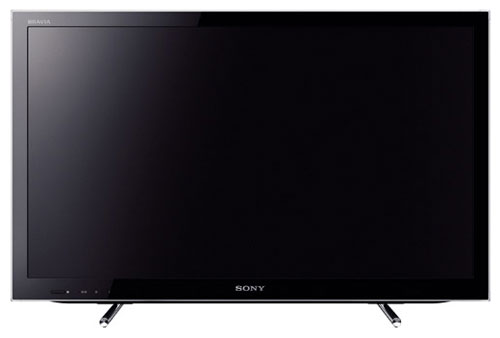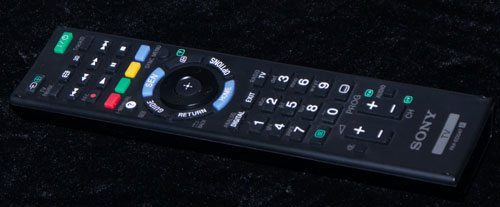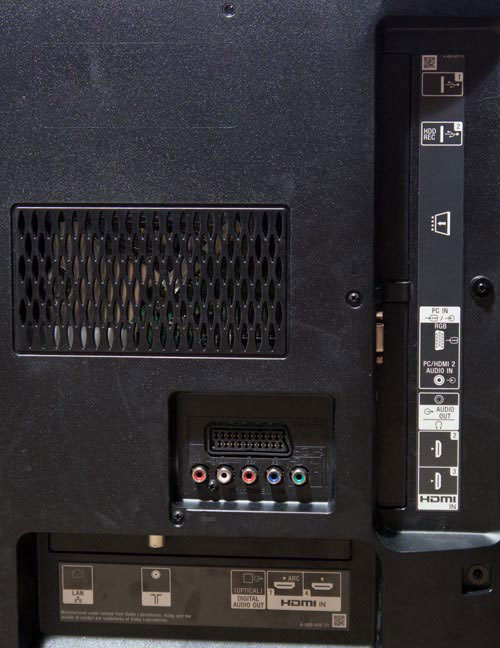Like LG, Sony seems to have a lot of fairly similar TV ranges at the moment, and it’s not too easy to actually find out what the differences between them are. Today we’re having a look at the Sony KDL-40HX753, which turns out to be company’s second-best HDTV range for 2012, one rung below the Bravia HX853 series. Compared to the top-end display, the HX753 3D Smart TV features slightly trimmed-down video processing (“X-Reality” rather than “X-Reality PRO”), and its motion performance is rated at “400hz” rather than “800hz”.
<!-- google_ad_client = 'pub-2887677957235196'; google_ad_slot = '4990177225'; google_ad_width = 336; google_ad_height = 280; //-->
We liked the 55-inch version of the Sony HX853 when we reviewed it a few weeks ago, since it gave a good big-screen LCD image at a price below Samsung’s LED LCD TVs, and although it had some colour inaccuracy problems, it was free of some of the video processing quirks we saw on the Korean manufacturer’s efforts. Let’s see if the KDL-40HX753 is similarly good value.
Note: The specific model we reviewed was the Sony KDL40HX753BU, which denotes the 3-pin-plug United Kingdom version. Although we did not test the bigger, 46-inch Sony KDL-46HX753, there shouldn’t be any major difference in picture performance since both have identical specifications bar screen size.
There’s not much trace of the Sony we knew in the late 90s and early 2000s present on the KDL-40HX753: the design is as plain as they come, with a thin gloss black bezel surrounding the LCD panel, with a silver trim on the outer edge. Design is highly subjective, but the gloss black material just looks cheap to our eyes, especially because our review sample already had its fair share of scratches and scuff-marks present. That suggests that the delicate finish will need to be taken special care of during routine cleaning.

The upside of the design is the television’s unique stand, which is a small, easily assembled chrome structure. The LED LCD TV can swivel on the stand but can’t be moved forward from its back-tilted position. Note: Several readers have pointed out that the panel can indeed be positioned upright by changing the screw-in points. Thanks Richard Bates, Steve and jack111 from our forum.

The remote control is the same as that of the Sony HX853 series: it’s lightweight but not unsubstantial, fits easily in the hand, and has access to all important features.
All connections are made directly to the back of the Sony HX7, without the need for any breakout adapter cables. 4 HDMI inputs is more than on Samsung’s HDTVs this year.
 |
| Rear connections on Sony Bravia HX753 |
Sony’s overwhelming XMB menu is once again present here, and it can be clunky to use due to its layout and delayed reaction speed (both of which make us pine for the 2006-era “WEGA GATE” menus). Fortunately, pressing the OPTIONS button on the remote (which is just right of the HOME menu button) brings up a shortcut menu with the most frequently accessed picture settings on it.
The top-level adjustment is “Scene Select”, which has no less than 10 options. From our point of view as enthusiasts who want to see a naturally coloured image, that’s 8 more than it needs, with “Cinema” being the best out-of-the-box setting for accuracy, and “Game” being useful for cutting down input lag.
Going down a level, there’s [Picture Mode]: in the out-of-the-box setup, “Cinema 1” is more accurate than “Cinema 2”. Be sure also to press the HOME menu button, find Settings > System Settings > Eco, and disable the [Light Sensor] feature if you want to avoid brightness fluctuations and get consistent light output from the panel. You’ll also need to back up a level, and find Settings > Display > Screen, and make sure that [Display Area] is set to “Full Pixel” if you have a 1080p Blu-ray input to the HDTV, to avoid overscan (which degrades quality by cropping the edges of the image).
![[Picture] menu](https://www.hdtvtest.co.uk/news/wp-content/uploads/2018/04/hdtv_Sony-KDL40HX753_picmenu.png) |
| [Picture] menu |
There are a couple of [Motionflow] modes, of which we selected “Clear Plus”, which dims the image slightly due to the techniques it uses to improve the perceived motion clarity. This just managed to give us the 120 cd/m2 of light we aim for during calibration, which will suit most rooms on the less bright end of the scale. If you’re watching in a bright room with large windows, stepping down to “Clear” would be a good idea.
The “Impulse” [Motionflow] mode also makes an appearance, and while we love the motion clarity – it produces the most blur-free images we’ve ever seen on an LCD – few users will be able to tolerate the flicker it produces.
There are some noise reduction controls, and a basic 2-point greyscale calibration (“White Balance”) screen. A basic [Gamma] curve selection is also present, which again will allow the distribution of lightness in the image to be tailored to the brightness of the viewing environment. Not surprisingly given the absence of one on the flagship HX8 series, there is no colour management system on the Bravia KDL-40HX753.
| Jump To: 1. DesignNext: Calibration3. Performance |
jQuery(document).ready(function($) { var toc = $("#tableofcontents").html(); $("#tablecontents").html(toc); });